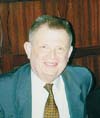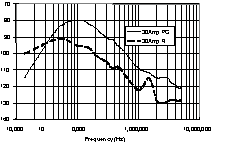
 |
EMC Standards Activities |
Don Heirman,
|
| The Standards Development Committee (SDCom) of the EMC Society develops and maintains EMC test and measurement standards for use by US and international companies and organizations. These standards apply to situations that vary from site surveys to the determination of the immunity and emission properties of equipment and systems. Mil-Std-220A was developed in 1952 by the US Department of Defense for evaluation of the performance of communication filters under known source and load impedances. While there is no comparable standard for the evaluation of installed power line filters which encounter widely varying source and load impedances, Mil-Std-220A is still often used for characterizing power line filter behavior even though documented evidence shows that the results could be very misleading. Working Group P1560 is seeking to rectify this long-standing problem with standard P1560 which addresses the RF characteristics of such filters in typical load and source impedances. You are encouraged to provide Kermit Phipps and his working group with your opinions, recommendations and assistance as this work is proceeding to completion. The following article describes the issues being addressed in P1560. |
by Kermit O. Phipps, Member – IEEE EMC Society and Standards Association
EMI/RFI facility filters specified to typical 100 dB levels are used in government and commercial installations to prevent unwanted signals on power lines. The common standard used to measure filter insertion loss (synonymous for matched impedance attenuation, typically 50 ohms) is MIL-STD-220A. Because MIL-STD-220A was developed for matched impedance communication systems to test mobile radio filter suppression capacitors in 1952, it is often considered unrealistic for mismatched source and load impedance found in almost all power applications. Since then, other standards and methods have been discussed and developed that attempt to model "real world" attenuation by requiring varying source and load impedance. As Figure 1 illustrates, the MIL-STD-220A method gives a much different expected value for attenuation than the proposed new method.
 |
Figure 1. Generic 50 Amp filter measured using MIL-STD-220A and Realistic Method at 30 Amp loading. |
To date, however, none of the other measuring methods have replaced MIL-STD-220A. The proposed new standard supports the continued use of the much-beleaguered matched impedance test above 10 MHz. Additionally, the standard addresses power quality issues and critical RF performance factors below 10 MHz for realistic load and source impedances.
Currently the P1560 Working Group is engaged in evaluating filter standards and methods of filter characterization. These efforts are directed at bringing about standardized test methods for the effective measurement and specification of facility power line filters. After conducting a literature search and reviewing several existing standards and methods, the following key areas are being addressed:
The Working Group is considering all the possible variables that current standards often do not recognize. Figure 2 illustrates the situation where two different loads are tested at the same rms value of current.
 |
Figure 2. Measurement results for linear and nonlinear loading with the same rms current value. |
As can be seen, the load characteristic is very important. Figure 3 illustrates a gain instead of attenuation across the filter band because of differences in source impedance.
 |
Figure 3. Filter gain across attenuation band, approximately 10 dB amplification of noise. |
To date, the P1560 Working Group has developed a "strawman" document. This draft is intended to help the group recognize the shortcomings and pitfalls of test methods as they are worked out addressing each issue listed above before the issuance of a first draft.
The P1560 Working Group is still currently open for membership for anyone interested in contributing. The group meets officially once a year at the IEEE EMC Symposium. All activities and issues are coordinated by e-mail. We only ask that you:
If you would like to contribute to this activity, please do not hesitate to let KPhipps@EPRI-PEAC.com know.
 |
Kermit O. Phipps is the Senior Power Quality Technician at EPRI PEAC Corporation, a power quality engineering services and consulting firm, located in Knoxville, Tennessee. He has over twenty years of experience in electronics, ranging from discrete component-level troubleshooting to analog/digital system design. As a Manual Electronic Warfare Test and Component Specialist in the U. S. Air Force, he was awarded the Air Force Accommodation Medal for his expertise and work with the validation of the Central Air Data Computer Automated Test System for the F/FB-111 aircraft. For the past ten years, Mr. Phipps has conducted tests and evaluations of equipment performance in accordance with standards of ANSI/IEEE, IEC, U.S. Military, and UL, as well as with the EPRI System Compatibility Protocols. Mr. Phipps has conducted a number of power quality training sessions and numerous field investigations relating to EMI, EMF and Power Quality. He may be reached at KPhipps@EPRI-PEAC.com EMC